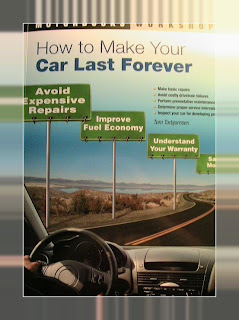There are many simple ways that you and your family can conserve water at home. You’ll see your water bills decrease the more you conserve. The amount of money you can save from conserving water at home depends upon how many people live in your home and the number of water saving techniques you implement. Get started today and see how small changes can make a big difference in your bills.
Before you attempt to improve your water usage habits, set realistic goals for your family. Call a family meeting to discuss the importance of water conservation and highlight the plan you and your family will take to improve your habits. Meet together once a week to review how each person did. Use charts for younger children to track their improvements. Older kids may need some reminders. In fact, at first, I needed to remind myself to implement the changes. But after a few weeks, it all became second nature.
Bathroom
The most water used in a home is in the bathroom. There are two things you can do to limit your bathroom water usage. The first, installing water-saving devices, involves just you. The second, improving your habits, involves you and your family.
Install Water-Saving Devices
Installing water-saving devices is simple and quick. There are a few devices which can help reduce your water usage in the bathroom.
1)
Low-flow faucet aerators, which can be installed for just a few dollars, can be purchased at any home improvement or plumbing supply store. Low-flow aerators help decrease the amount of water flowing from your faucets.
2)
Low-flow shower-heads also decrease the amount of water used by delivering only 1.6 gallons of water per minute (instead of conventional shower heads that deliver 4-5 gallons per minute).
3) Convert your toilet into
a dual-flush toilet with an inexpensive flush adapter kit. These kits can be purchased for under $100 and will provide you with a full-flush or half-flush option. If you are in the market for a new toilet, choose a high efficiency toilet with a dual-flush option.
Better Habits
There are several ways to improve your bathroom water usage habits. First, keep a stopwatch in the bathroom and have your kids record the amount of time they use water to brush teeth and take a shower. Offer a reward system for decreased times.
.
Turn off the faucet while brushing your teeth. According to the Environmental Protection Agency (EPA), you can save up to 8 gallons of water per day by doing so.
.
Teach your kids to choose showers over baths. My kids started taking showers at age 5 (with assistance). Showers use much less water than baths, as baths typically use 5 times the amount of water that showers do. Toddlers should be encouraged to take baths with limited water. If you teach your children while they are young to use limited bath water, it will become second nature. For teenagers and adults, decrease the time you are in the shower and turn off the water while soaping up and shaving.
.
Don’t use the toilet as trash.
Kitchen
.
Dish-washing – Turn the faucet off while scrubbing dishes. Turn the faucet back on to rinse them.
.
Dishwasher – Use the dishwasher for full loads only. Manually rinse dishes before placing them in the dishwasher. This is a great chore for kids, as you don’t need to worry about the dishes getting washed properly. A manual pre-rinse will help avoid the need to run the pre-wash cycle.
.
Keep a pitcher of cold water in the fridge to avoid your kids running the tap while waiting for the water to get cold.
Laundry
.
Encourage everyone in the family to wear un-soiled clothes more than once. This will help contribute to less frequent loads piling up awaiting your washing. This, in turn, will reduce your water usage.
. Always select the
proper water level for your loads.
. If you are in the market for a new washing machine, choose an Energy Star approved washer for
highest efficiency standards.
Landscaping
.
Limit the amount of time you water your lawn. Water your lawn only in the early morning to avoid quick evaporation from the hot sun.
. Consider
harvesting rainwater. It involves collecting and storing rainwater in a barrel and then using it for your lawn and garden. Get your kids involved by creating a rainwater collection system together, including decorating the barrel together. The Web is full of great ideas for doing so.
. Create a
low-water landscape: Plant only native and drought-resistant plants, reduce the amount of turf in your yard by placing mulch or planting ground covers and use a drip irrigation system instead of a sprinkler system.
Your kids will learn an invaluable lesson from applying water conservation techniques at home. The lesson will teach them respect for you, for money and for the environment.
Special thanks to those filling in while I am on vacation - Written by Marcy Tate. Marcy is a home improvement blogger at Networx. She works with plumbers on practical ways homeowners can save water.

















